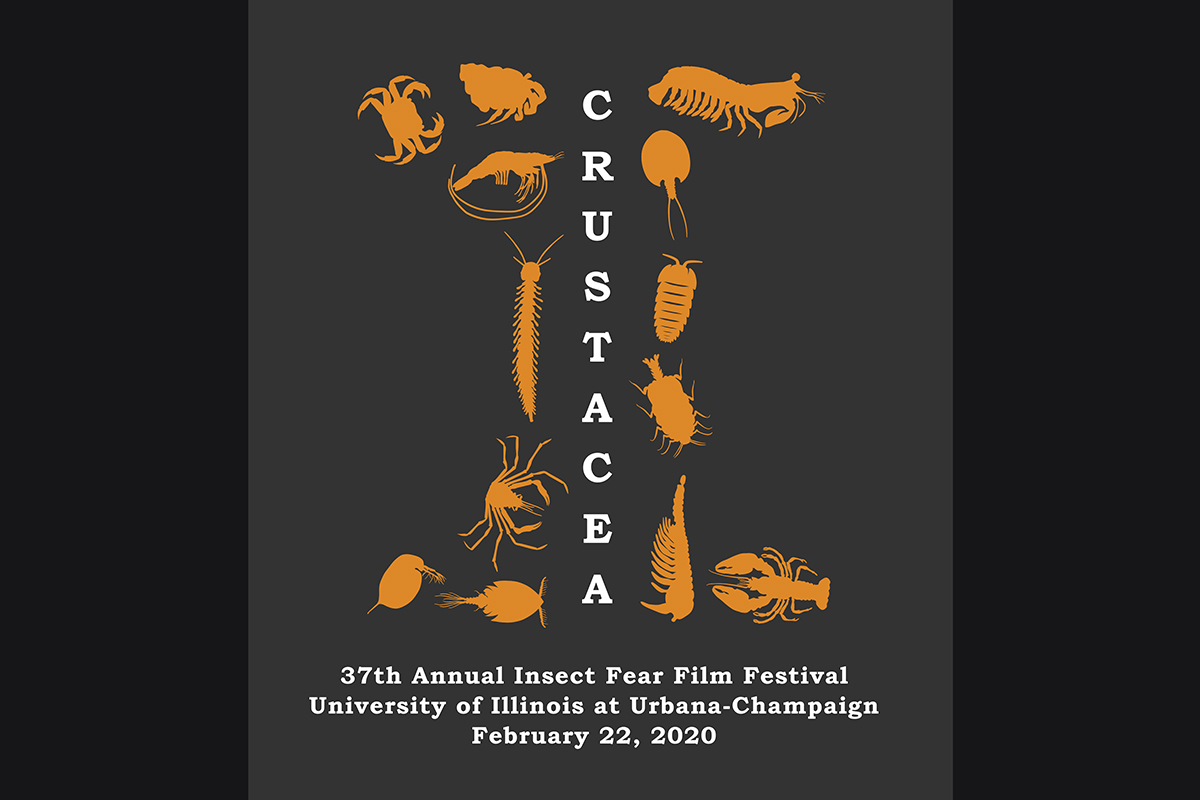
The 2020 Insect Fear Film Festival will feature crustaceans, which are closely related to insects. The two groups share a common ancestor.
Courtesy Entomology Graduate Student Association
CHAMPAIGN, Ill. — Lobsters, shrimp and crayfish look like marine versions of insects, with their antennae and segmented bodies. The resemblance is not by chance. Crustaceans and insects are related – more closely than scientists once thought.
"Crustacean Fear Films" is the theme of the 37th Annual Insect Fear Film Festival on Feb. 22 at the University of Illinois at Urbana-Champaign. Crustaceans have become more important to entomologists in the last decade, said May Berenbaum, the department head of entomology and founder of the film festival.
"Crustaceans are not insects. But the science community has realized that insects are probably crustaceans," she said.
Both insects and crustaceans are arthropods, characterized by segmented bodies, exoskeletons and legs with joints. Genomic studies have revealed that the two groups have a common ancestor. "It's kind of like Ancestry.com for arthropods. You never know what will turn up in your family tree," Berenbaum said.
One of the feature films for the festival involves giant crabs. In "Attack of the Crab Monsters" (1957), giant crabs have been altered by radiation from atomic testing. They consume people, retain their memories and use their voices to lure others to their deaths.
"It doesn't make a lot of sense," Berenbaum said. "It's confusing but entertaining."
The other feature film is "The Bay" (2012), an ecological disaster story in Chesapeake Bay that starts with a Fourth of July crab-eating festival and involves an order of crustaceans called isopods. The story is based on a parasitic isopod that destroys the tongue of fish such as the red snapper and then attaches itself to become the fish's tongue.
The film's director, Barry Levinson, was asked about creating a documentary on pollution in Chesapeake Bay and instead spun the pollution story into an eco-horror story, Berenbaum said.
"It is grotesque beyond anyone's imagination, and in real life there have been lawsuits because people bought and cooked red snapper and inadvertently ate these things," she said.
The feature films will be preceded by two short films. "The Fresh Lobster" (1928) is about a man having a terrible dream in which lobsters chase him. It has charming animation, Berenbaum said.
"Just Add Water" (2016) tells the story of Harold von Braunhut, the inventor and marketer who developed "Amazing Sea-Monkeys" – brine shrimp sold as pets and advertised in comic books.
The festival's insect petting zoo will include the usual assortment of insects, including hissing cockroaches, grasshoppers and beetles, as well as tarantulas and other arthropods. It also will include crustaceans such as triops, clam shrimp, colorful ornamental freshwater shrimp, crayfish, a tangerine-and-white species of roly-poly bugs (also called pill bugs) and spider, blue and vampire crabs.
Visitors can get a close look at insect parts through Bugscope, a high-resolution scanning electron microscope at Beckman Institute for Advanced Science and Technology that can be controlled remotely.
The festival also will feature ventriloquist Hannah Leskosky – Berenbaum's daughter – with her lobster puppet, a display of insect-themed artwork created by area students for the festival's art contest, origami insects and crustaceans, and face painting.
A new addition this year with the crustacean theme is a traditional Chinese and Vietnamese gambling game, Bầu Cua Tôm Cá, or "gourd-crab-shrimp-fish," played with three dice that have pictures of a prawn, a fish and a crab, along with a stag, a rooster and a gourd.
The festival is free and open to the public. The doors open at 6 p.m. Feb. 22 at Foellinger Auditorium, 709 S. Mathews Ave., Urbana. Prizes for the art contest will be announced at 7 p.m. and the film screenings will begin at 7:30 p.m.






